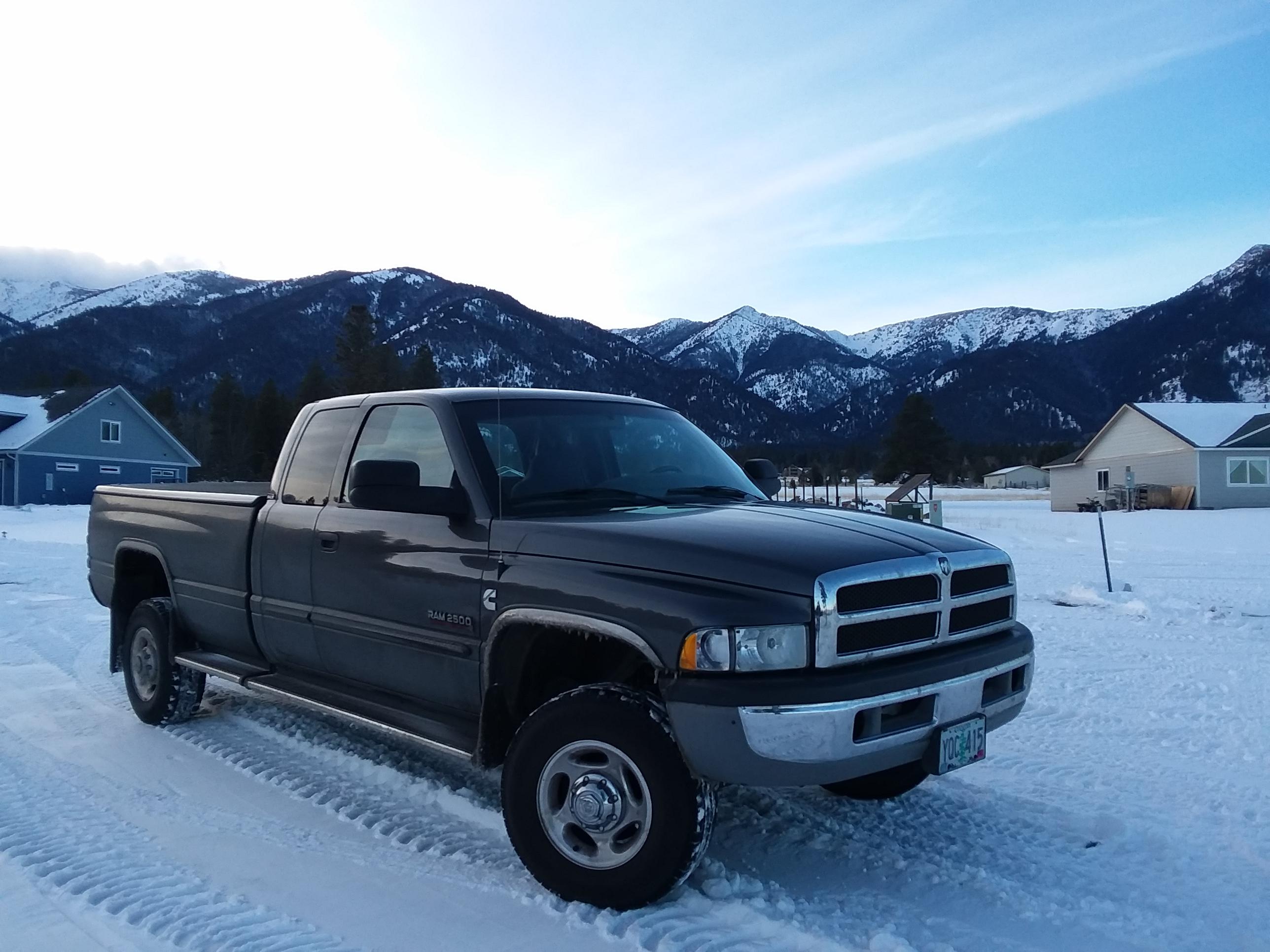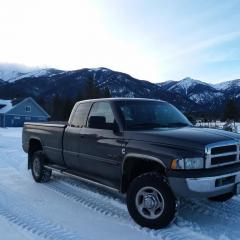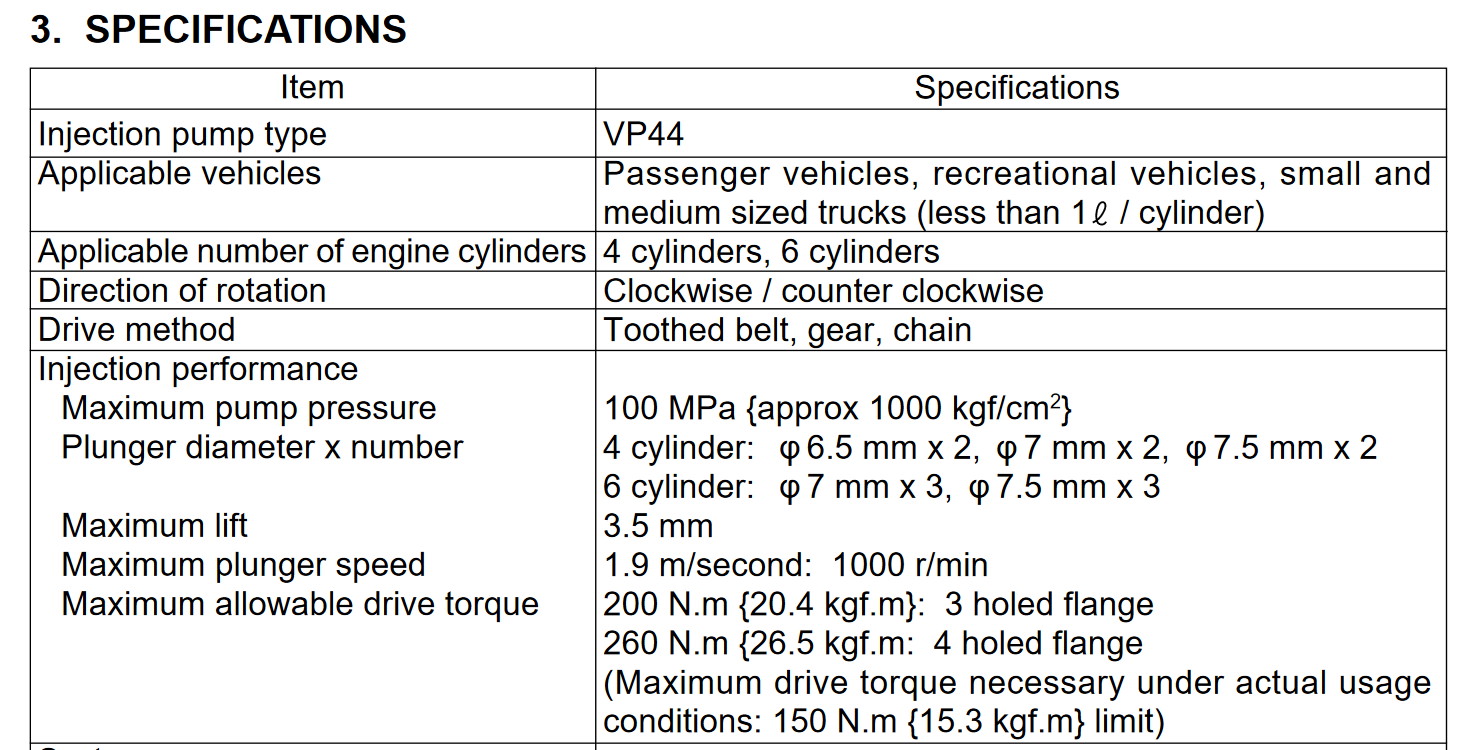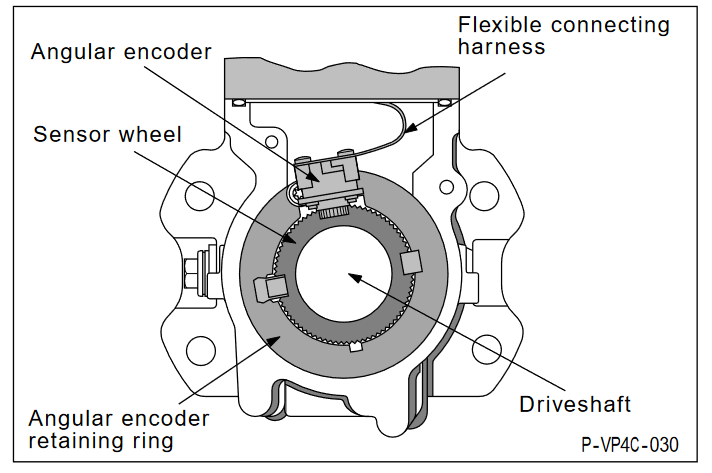
Everything posted by Tractorman
-
Greeeting! :)
So, I ordered the parts for the APPS relocate and the power steering / reservoir and vacuum pump relocate. Some of the parts have arrived and I am going to do the APPS relocate, first. First observation on the new APPS throttle pedal is that the pedal only rotates 20° from stop to stop. The mechanical part of the OEM APPS rotates 45° from stop to stop. I much prefer the 45° for more precise throttle control. Just curious, @Mace - is your new throttle pedal also limited to 20° rotation? I am going to modify the OEM APPS throttle and make it work for three reasons. One (as just mentioned) - the 45° rotation is preferred, two - there is a mechanical low idle and high idle adjustment screw, and three - I already have a functioning custom installed fast-idle solenoid mounted to the hardware. I have already removed all of the throttle associated components under the hood. It certainly does free up some space. Just thought of something, so I am editing this part of my post. I need to check the distance of the throw on the OEM APPS end of the throttle to see if is the same as the distance of throw on other end of the throttle. If so, it would be a 1:1 ratio and the throttle pedal would need to rotate 45° to get full use of the throttle. - John
-
Fuel injection quantity
I was thinking that you might find that specific information useful. - John
-
Fuel injection quantity
I believe that there are 1,000 mil in a liter. Does this help? I think you can get pretty accurate with the high pressure side of the injection pump, but not so much with the vane pump. Even though the vane pump is fixed displacement, I have never been able to find documentation of volume displaced per one revolution of pump. To further complicate matters, is that the vane pump puts more fuel over the regulating valve at higher rpms that it does at lower rpms - in fact, at low rpms the vane pump may not even put any fuel over the regulating valve - nobody seems to know. I performed return fuel flow tests that showed 19 gph at idle and 28 gph at 2,000 rpm. So, theoretically the the fuel return volume should have more than doubled at 2,000 rpm, but it didn't. So, being that the vane pump is fixed displacement, this would mean that there is lots of fuel passing over the regulating valve when the engine is at 2,000 rpm. How much, who knows? Below are some fuel return flow tests I performed from the VP44 to the fuel tank. The VP44 is an HO pump. For the tests I used a one-gallon oil jug with volume markings at one-quart intervals. I used a helper and started the clock on the 1 quart mark on the jug and stopped the clock on the 3 quart mark on the jug. The total volume returned for each test was .5 gallons of fuel. My truck is a 2002 2500 with a NV5600 transmission. The fuel lines are stock diameter, the fuel filter is the OEM filter inside the filter housing mounted on the engine, and the lift pump is a used frame mounted FASS DRP-02 that probably flows somewhere around 65 GPH - 12 psi @ idle and about 6 psi @ 2,000 rpm. I performed the tests as follows: Test #1: engine at idle, fuel transfer pump operating - .5 gallons pumped in 92 seconds Test #2: engine at idle, fuel transfer pump operating - .5 gallons pumped in 94 seconds Average fuel pumped is .5 gallons in 93 seconds = .3225 gpm rounded to .32 gpm or 19.35 gph Test #3: engine at idle, fuel transfer pump disabled and bypassed - .5 gallons pumped in 93 seconds Test #4: engine at idle, fuel transfer pump disabled and bypassed - .5 gallons pumped in 95 seconds Average fuel pumped is .5 gallons in 94 seconds = .3191 gpm rounded to .32 gpm or 19.35 gph Test #5: engine at 2000 rpm, fuel transfer pump disabled and bypassed - .5 gallons pumped in 64 seconds Fuel pumped is .5 gallons in 64 seconds = .47 gpm or 28.1 gph Return flow tests were done by a couple of guys on the Turbo Diesel Register in April of 2001. There test results were very close to mine. - John
-
Greeeting! :)
This part number is showing gasket only. I did see a pump (no kit) with the part number 4988390, not 290. Is there an actual "kit"? I know - lots of questions. - John
-
APPS info
Thank you for clearing that up. Those sellers are rather crafty. I think I am going to proceed with this modification. Really appreciate your help. - John
-
APPS info
Just for clarification. The three photos that you posted of APPS - are they the counterfeit ones, or the good ones? Also, If I am understanding correctly, I can just use my Timbo in the conversion - correct? - John
-
Greeeting! :)
Mace, Thanks for the sharing details on those two mods - very informative and you have definitely caught my attention. I have the very same symptom that you mention regarding the limited turning of the steering wheel with the vehicle stopped. I would be very happy to see that gone forever. Definitely like the idea of continuing to use my Timbo APPS inside the cab. - John
-
Greeeting! :)
Do you recall the approximate cost for the conversion? Also, what is a "WC sensor"? - John
-
Greeeting! :)
Mace, thanks for the quick reply - I will be looking forward to seeing the pictures tomorrow. I have always had engine noise transmitted into the cabin via the throttle cable. Did you have a similar noise before you did the throttle modification? - John
-
Greeeting! :)
Welcome to the site Mace. Some interesting things you have done to your truck. Looks like @IBMobilebeat me to it. I am interested in your APPS delete, as well. I see that you have a 6 speed transmission. Does your electronic pedal have smooth, precise control of the the throttle (important to me with a manual transmission)? I have a 2002 truck - original owner - at 393,000 miles. How many miles / kilometers on your truck? - John
-
Nv4500 chatter while coasting with clutch out, sounds like valve chatter. Goes away with slightest touch of clutch pedal
I would re-train your left foot to not rest on the clutch pedal. You may have contributed to this noise. There is already light spring pressure from inside the slave cylinder that removes the slack from the pushrod / throw-out fork and maintains zero clearance for the throw-out bearing while the clutch is engaged driving down the road. Any additional force will make the bearing spin at engine rpm 100% of the time. - John
-
Headlights, tail lights, and turn signals blink
Didn't think abut that part - you may be on to something. - John
-
VP 44 home made brains part 2 getting real now
You guys are amazing!
-
Nv4500 chatter while coasting with clutch out, sounds like valve chatter. Goes away with slightest touch of clutch pedal
I would probably keep driving the truck and continue monitoring the noise. If it truly is the actual bearing that is failing, it will get worse and you would be able to feel the bearing roughness with the clutch pedal engaged. From what you said in your original post, "There's no noise if I coast for a long time with the clutch in either." would indicate that the actual bearing is doing what is supposed to be doing. - John
-
Nv4500 chatter while coasting with clutch out, sounds like valve chatter. Goes away with slightest touch of clutch pedal
I was one of those many people - thanks for the info. I don't think it is your throw-out bearing - I think it is the contact area between the part of the bearing that contacts the tip of the diaphragm fingers. There is nothing to hold a film of grease there. I think the bearing itself is doing fine. In the "old days", before the common use of hydraulic clutch controls, clutch control was done mechanically. The adjustment on mechanical linkage never allowed the throw-out bearing to contact the diaphragm fingers when the clutch pedal was released. Not so with the hydraulic clutch control. - John
-
Nv4500 chatter while coasting with clutch out, sounds like valve chatter. Goes away with slightest touch of clutch pedal
Large trucks (like Class 8 trucks and even medium duty trucks) use a special throw-out bearing that has a grease hose attached with a zerk fitting on the end, which makes the bearing accessible for maintenance. However, the hose only puts grease in the actual bearing. It does not put grease in the contact area of the bearing to the pressure plate fingers, which is where I think your noise is coming from. The throw-out bearing in your truck is usually a non-serviceable sealed bearing and will normally last the life of the clutch. You may have a custom throw-bearing that can be greased remotely. I checked a Valair site, but I didn't see anything like that, but that doesn't mean that it can't be done. If that zerk fitting does grease the throw-out bearing, I would only give one or two pumps of the grease gun - you definitely do not want to over-grease that bearing and risk getting grease on the clutch facing. - John
-
Nv4500 chatter while coasting with clutch out, sounds like valve chatter. Goes away with slightest touch of clutch pedal
Agree on the throw out bearing. Even with your foot off of the clutch pedal, an internal spring inside the slave cylinder places light pressure on the pushrod that engages the clutch fork. This means that the throw out bearing is always in contact (even though lightly) with the diaphragm fingers of the pressure plate. A lack of lubrication at the contact point can cause the chattering noise. As soon as you touch the clutch pedal, you introduce a bit more force to that area and the chattering stops. Toyota trucks are notorious for the symptom you are experiencing. A lot of people have carefully sprayed a lubricant in the area, or have just lived with the noise. What is a "zero" fitting? - John
-
Headlights, tail lights, and turn signals blink
Thanks for the clarification. I should have figured out that you are familiar with these trucks, just reading your signature. My brother-in-law owns a 2003 truck and I recall that he had a control module that operated his headlights. I looked on-line and found this "In a 2002 – 2005 Dodge Ram, the Front Control Module (FCM) is responsible for managing and controlling various electrical components and systems in the vehicle. Its functions typically include: Exterior Lighting Control: The FCM manages the operation of the headlights, turn signals and other exterior lights." I would start my trouble shooting in the this area since your symptoms involve multiple lighting circuits. - John
-
Headlights, tail lights, and turn signals blink
Define "blink" with more detail. If you are meaning that the lights dim and brighten in a cycling manner after a cold engine start, then this is normal. What you are witnessing is the post-cycling of the intake manifold heaters until the truck is driven or the engine reaches a specific operating temperature. When the intake manifold heaters are post-cycling with an idling engine, the current draw is greater than the alternator output when the heaters cycle to "on", consequently, the lights will dim. - John
-
2001 24v Cummins High Idle Issue
I watched your video. Are you confident that you ran the engine long enough in the jumpered mode to conclude the VP44 is good? You could jumper the lift pump to perform a longer test. In my mind I would want to be absolutely sure that the VP44 is not the problem. You are definitely right about checking out your wiring mess before you condemn the ECM. Very interested to know what the solution is going to be. Hopefully, you will succeed - I think you will. - John
-
2001 24v Cummins High Idle Issue
There is an angular encoder inside the VP44. It provides many features, but one feature is a redundant camshaft position sensor. This is probably why the engine ran for 15 seconds during your test. I am guessing that when the VP44 is reconnected, the ECM is picking up the signal from the angular encoder and consequently turns on the lift pump. - John
-
2001 24v Cummins High Idle Issue
The ECM controls lift pump operation. When the engine starts, I THINK the ECM gets a continuous input signal from the cam position sensor and then the ECM commands the lift pump to turn on. I don't think a disconnected VP44 would affect that operation - but, I don't know that for sure. Are you saying that your current condition is that the VP44 is jumpered, there is no lift pump operation, and the engine won't start? If so, does the lift pump perform correctly when you re-connect the VP44? There is an internal fixed displacement vane pump (Bosch calls it a feed pump) inside the VP44. This pump will keep the engine running (even without a lift pump) unless there are sources for air to get into the fuel lines - especially between the fuel filter housing and the VP44. When you had the engine running for 15 seconds or so with the jumpered VP44, was the engine already warmed up and displaying the high idle issue prior to jumpering the VP44? - John
-
2001 24v Cummins High Idle Issue
Each to his own on going with stock injectors or RV275 injectors, or injectors from DAP. I ran my my original injectors to 303,000 miles and replaced them with new Bosch RV275 hp injectors. The original injectors were performing just fine - good fuel economy, good power, no smoking, smooth idle, no rpm increase at idle, easy starting, etc. I replaced them only because I thought it was time. A friend of mine is the original owner of a 1999 truck at 293,000 miles, still with original injectors. His engine performance is the same as mine. Sometime in the next year or so he will replace his injectors - probably with stock or RV275's. - John I am very interested in hearing the results of this test. ....., - John
-
High EGTs After Minor Upgrades
What are the EGT's running at now? I believe the 2004.5 through 2007 Cummins engines use the HE351CW turbo (waste-gated at 32 psi) as a stock turbo. These engines run stock 610 lb/ft torque and 325 HP. I recall from reading many posts on the Turbo Diesel Register that these truck owners were concerned about 1400° - 1450° egt's when towing. They were told that this is normal and not to worry about it. I also read that the injectors, head, and pistons for this era of engine are designed to handle the additional heat. It is my guess that you may not be able to achieve 1200° or less egt's with that turbo and the power you want from your engine. And, the 2nd generation 24 valve engine is not designed to handle the higher heat. I have RV275 hp injectors, stock HX35W turbo (393,000 miles now on the turbo), and a Smarty S03 set with a mild tune and stock timing. I can pull a 4 mile 6% grade at 50-55 mph (combined weight 20,000 - 21,000 lbs) and keep the egt's below 1200° - 5th gear 2,000 - 2,200 rpms. I hope that you can accomplish what you want with the tuner, but I am having doubts. - John
-
2001 24v Cummins High Idle Issue
I only mentioned it because you know absolutely nothing about the history of the injectors and the truck was behaving this way when you bought it. I really don't think it is the injectors, but in your case I wouldn't rule them out. Interesting regarding the your observations when revving the engine. I will be interested in hearing the results of your test. - John





